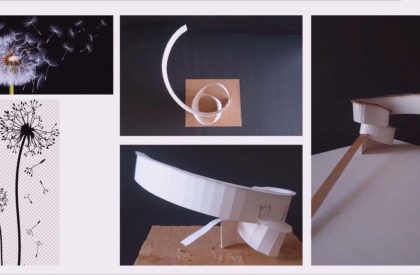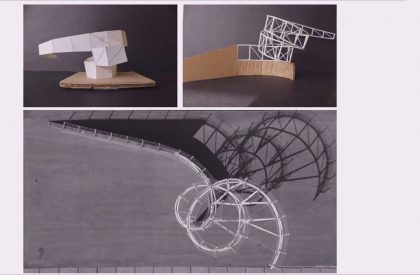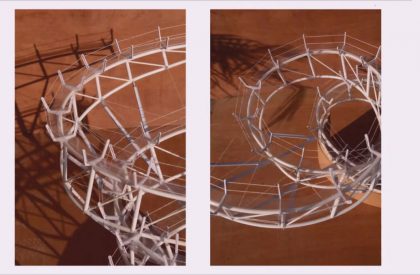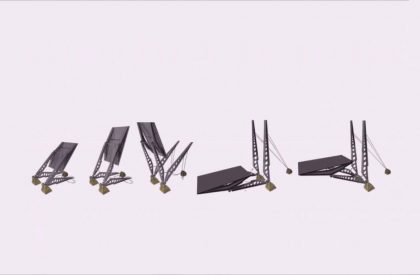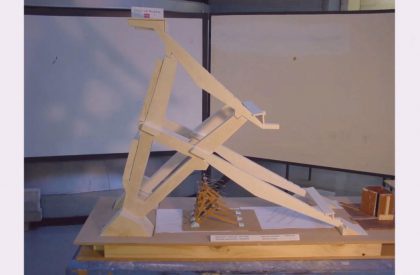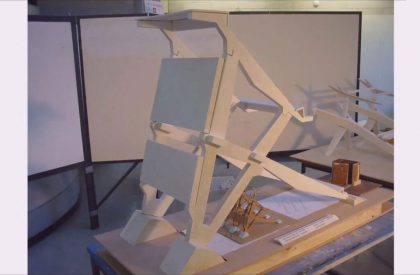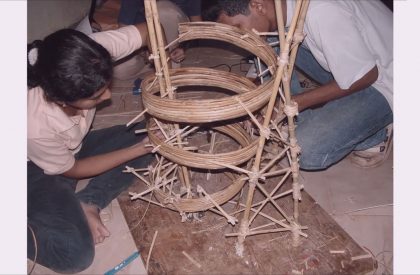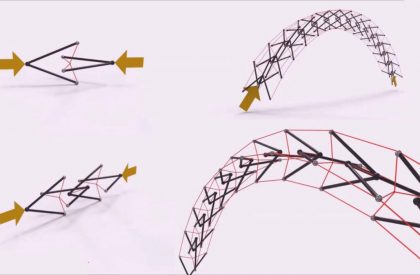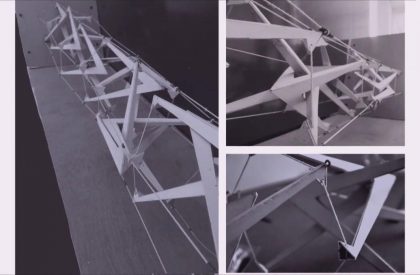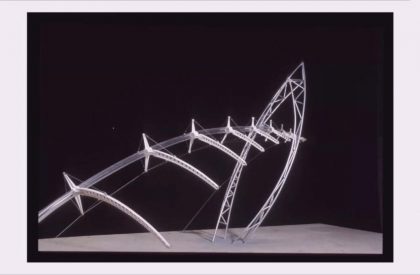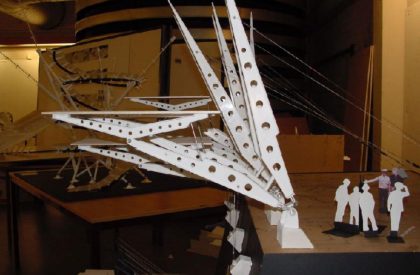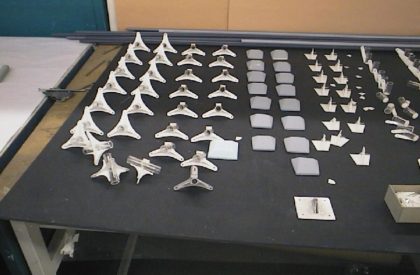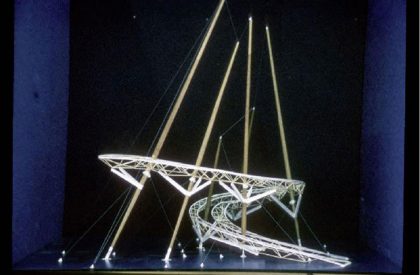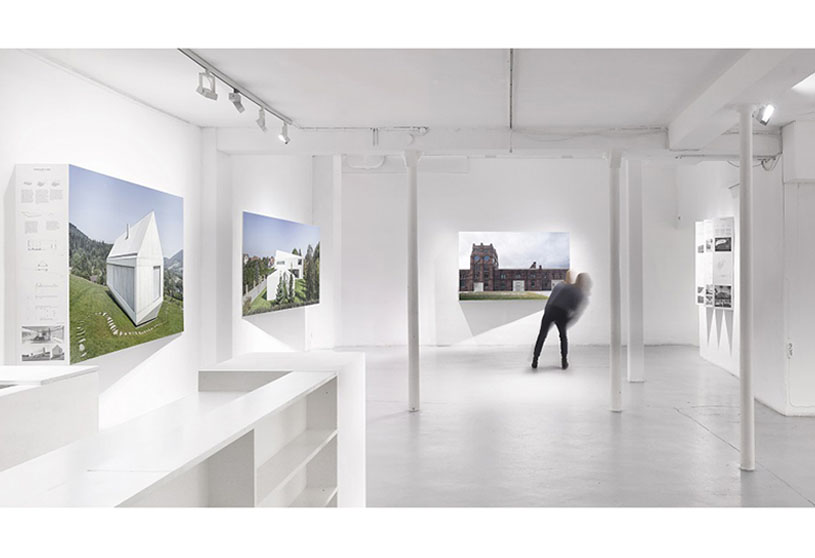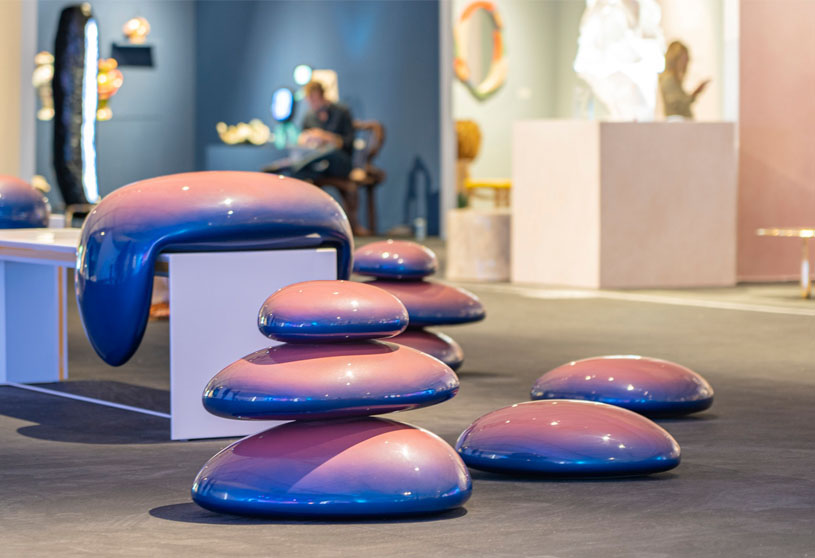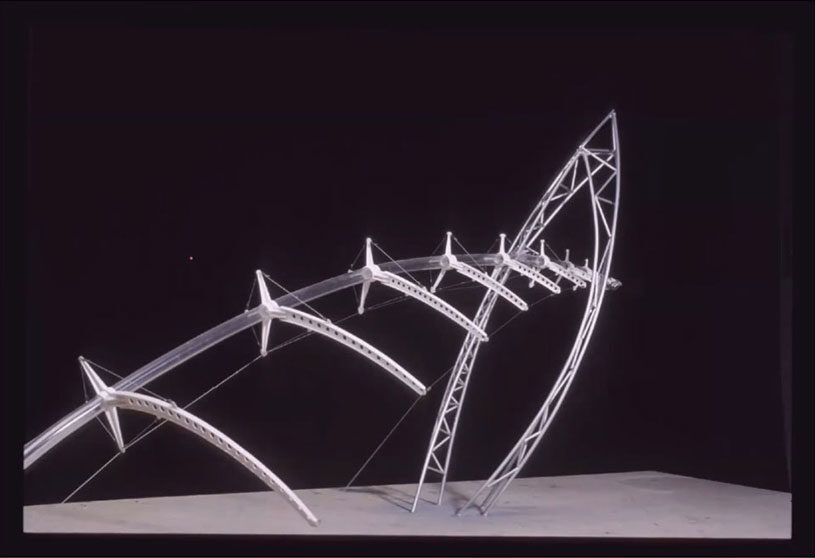“Technology in Architecture” is a series of live interviews at ArchiDiaries with some of the best practices, professionals, researchers, academicians and engineers, who have dedicated their efforts towards scientific and technical advancement in the field. The interview series was conducted during the months of January and February, 2021. As part of this series, Prof Gurdev Singh was invited for an online interview on January 16, 2021. Prof Gurdev elaborated on various teaching/learning methodologies for learning Structures under the title – Structures in Architecture, A Process. In this article, we present a summary of his talk with images from students’ works, done under mentorship of Prof Gurdev.
Prof Gurdev Singh is a graduate from CEPT University, Ahmedabad. He is not only an Architect, but also a Designer, Teacher and a Builder (Someone who builds with hands), with 45 years of professional and teaching experience in different institutions in India and Australia. His approach to Architectural education is uncommon and stimulating. This presentation, as the title suggests, is focused on explorations done in the realm of teaching/learning ‘Structures’ to students in architecture and design.
In the realm of architecture and design, and more so in pedagogy, the process to arrive at the design is of utmost importance. From this perspective, Prof Gurdev begins his talk with the introduction of the ideas of ‘free leap’ and ‘knowledge of wall’ that can help a student think out of the box.
“It is very important that we take a leap which is beyond our understanding, beyond our horizon. That leap is the fundamental beginning of learning. “
He believes it is important to take a ‘free leap’ without thinking whether it is achievable or not, to be able to think outside the box. In the process of taking the ‘free leap,’ our prior knowledge about the topic can become a hindrance in the form of a ‘Wall of knowledge’. In the first part of his presentation Prof Gurdev explains various methods that can help us take the free leap. Learning from nature, from our own body, from history, can become great sources of inspiration; and by careful observation and analysis one can start his/her journey into an unknown realm. The second part of the presentation talks about the use of different knowledge systems and tools to push ourselves to reach the point of ‘free leap’. He calls this process as going from “Abstract to Reality”.
On Methods of Learning:
Being a teacher at heart, Prof Gurdev lists five methods of learning that define his architectural and design pedagogy, with reference to the topic ‘Structures in Architecture’.
- Learning by Making
He believes the process of making and breaking, and learning by the same, is one of the most fundamental and most important methods of learning. Every time a structure/model/prototype breaks there is an opportunity to observe and learn, which in turn makes the next design better by emitting the old mistakes. It is this process that has generated some of the best architectural structures around the world.
- Learning from Nature

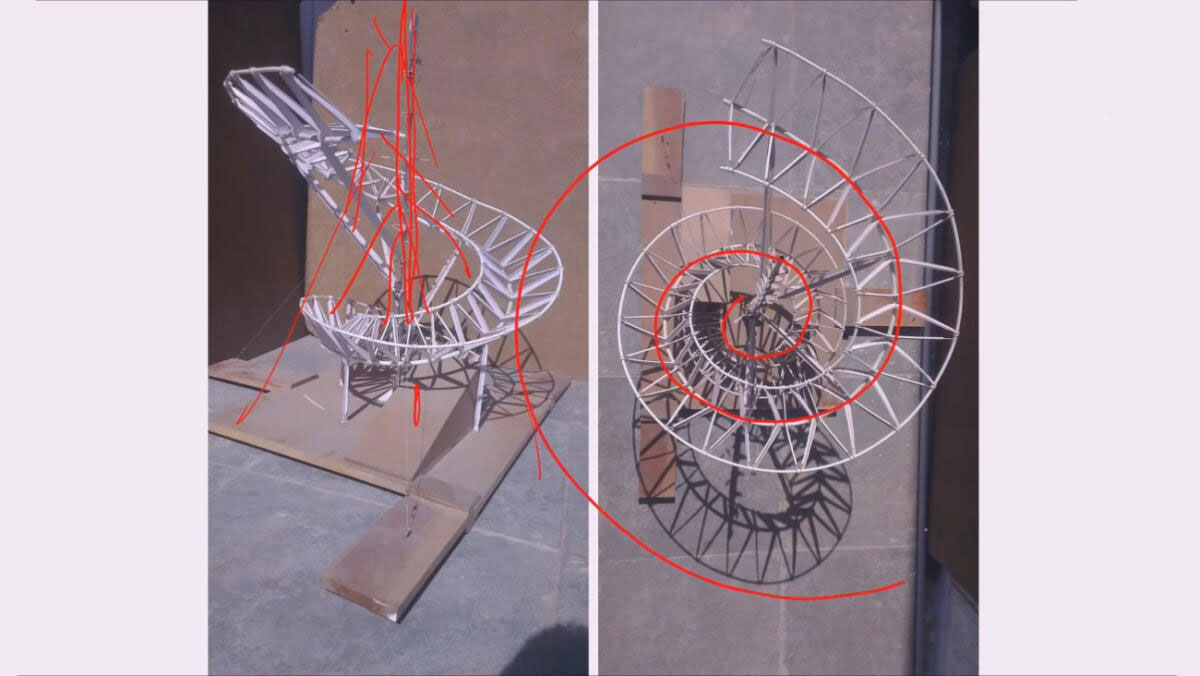
 This process cannot be used to solve an immediate problem; rather, it is a continuous process of learning for every day. One has to constantly learn and observe from nature and surroundings, store this information and learning, and go back to it while designing. Prof Gurdev explains how a simple grassblade or a banana tree can teach us about a basic structural principle such as cantilever.
This process cannot be used to solve an immediate problem; rather, it is a continuous process of learning for every day. One has to constantly learn and observe from nature and surroundings, store this information and learning, and go back to it while designing. Prof Gurdev explains how a simple grassblade or a banana tree can teach us about a basic structural principle such as cantilever.
- Learning from your own body
“The structure of the body is so good that anytime you get stuck in understanding a structural principle, the best thing to do is to put your body in that position and you will get a reasonable answer.“
Human body is a complicated structure of bones and muscles acting as a system, and can teach us a lot about structural principles. By observing our muscles in various kinds of loading conditions, one can understand what parts of our body are in compression, tension, torsion. This understanding can be very helpful, particularly, in the early years of learning structures in architecture and design.
- Learning from mistakes
Nothing can teach us a better lesson than mistakes. Prof Gurdev talks about a process where ‘mistakes’ are used as an opportunity to solve a structural problem at hand. By modeling a structural element under a specific stress condition to the point of its failure, we can get a clue about the potential form the element can adopt, in order to optimise on materials. Prof Gurdev uses an example of the Pantheon to demonstrate this idea. Romans had mastered the art of constructing arches; but, when it came to making a dome, as large as Pantheon, they ended up making the dome as a set of intersecting arches. This led to a thick drum at the base, in order to take care of the horizontal thrust of the arches. This ‘drum’ was then carved out to incorporate places for various functions. The simple ‘mistake’ here of making a dome as a set of intersecting arches has led to a wonderful structure such as Pantheon.
- Learning from History
It is history which has given us the flying buttresses and the beautiful double dome of St Paul’s Cathedral. The learning from these structures can go a long way in understanding the fundamentals of structures in architecture and design.
From Abstract to Reality:
The second part of Prof Gurdev’s talk focuses on the process of going from Abstract to Reality. Prof Gurdev shares his vast experience of conducting design studios in Australia and India with architecture and design students. One can see the practical demonstration of some of the learning methods described in the previous section.
In his Design studios, the students start by taking a leap with a very abstract exercise. After this the students go on a journey of translating these abstract forms into an architectural structure.
He shows examples of student works, where a topic such as surfboard or a ballet dancer is interpreted abstractly. First ‘half’ of the studio is focused on developing certain abstract ideas from the selected topic into a three dimensional form. This part allows students to do an exploration – free leap – without getting worried about structure or functions. The second ‘half’ of design studio is focused on applying appropriate structural system, and materials to develop the form by making a series of process models. These process models simulate the forces in the structural system, and are often tested to the point of failure, in order to arrive at the final form. This method of moving from abstract to reality pushes a designer to think unconventionally and lead to a better understanding of structure and their forces.
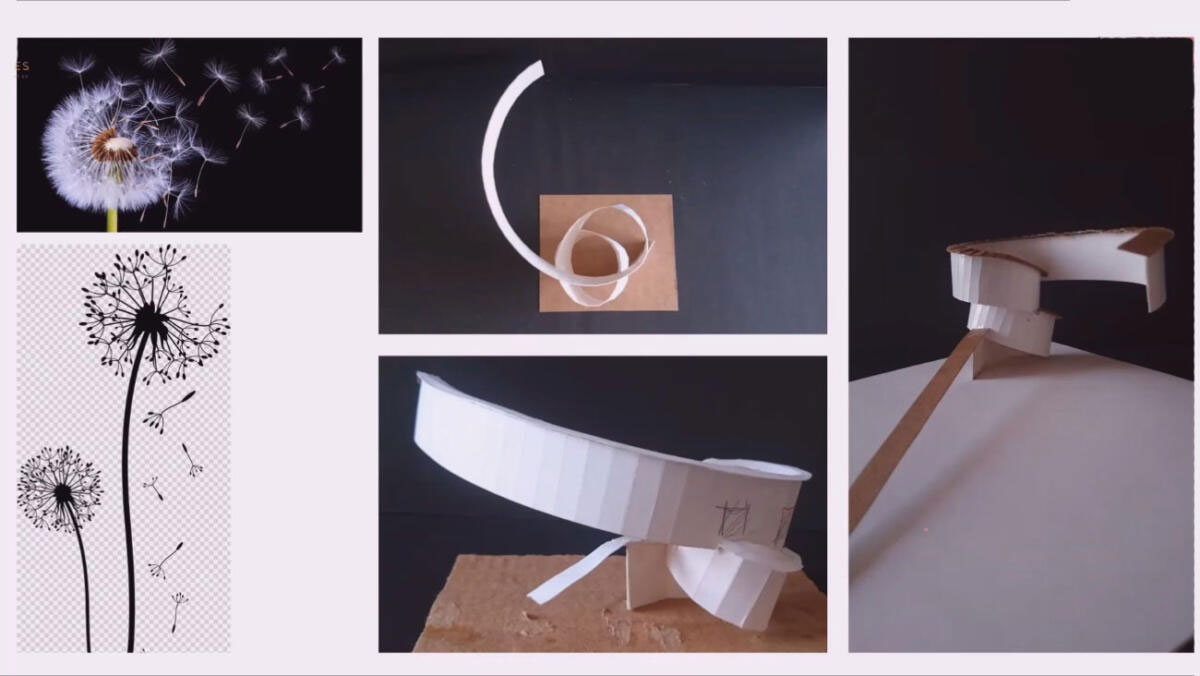

 The final outcome of the studio are 1:20 scale models that not only depict the form, but also tell us the entire story of how the structure is constructed. These models are made as a ‘kit of parts’ and assembled, just like the way a prefabricated or a precast structure will be constructed. Each component of the model is in the same stress condition (compression/tension) as the real life structure. Hence, the selection of the model making material and the process of model-making are equally an intense learning process as the rest of the studio.
The final outcome of the studio are 1:20 scale models that not only depict the form, but also tell us the entire story of how the structure is constructed. These models are made as a ‘kit of parts’ and assembled, just like the way a prefabricated or a precast structure will be constructed. Each component of the model is in the same stress condition (compression/tension) as the real life structure. Hence, the selection of the model making material and the process of model-making are equally an intense learning process as the rest of the studio.
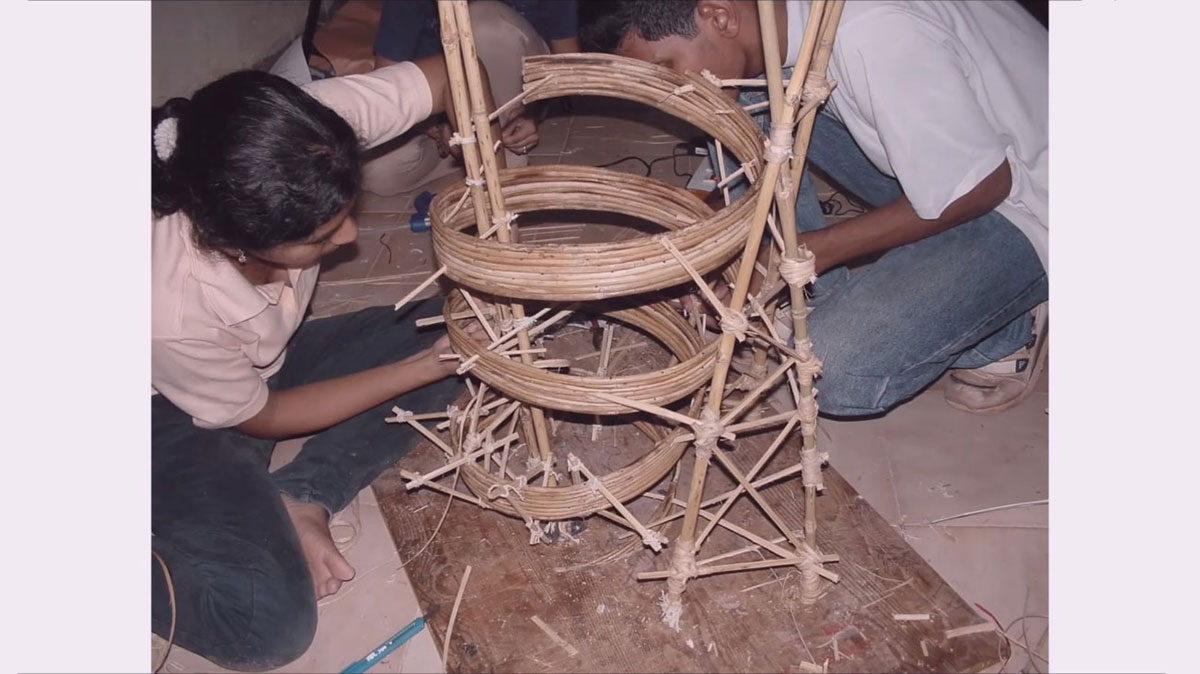
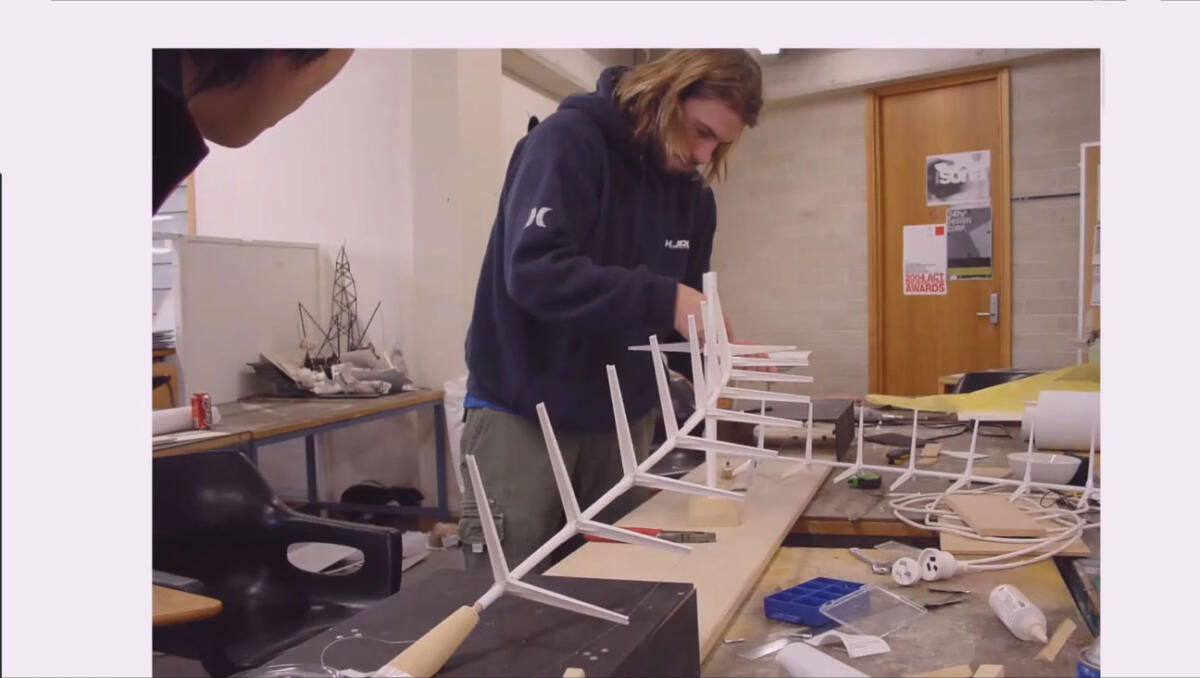
This method of exploration is also something Prof. Gurdev singh uses in his practice at Akaar (link). He shares an example of how his office designed a bridge in Bhutan over a clif, by taking inspiration from the traditional ‘Laxman Jhoola’ found in the region. (Images)
The process is not only limited to material like steel but also pushes one to explore materials like concrete. With concrete, one learns joineries and how to make the cast in reality. He explains how one can uniquely cast concrete and then raise it vertically to achieve curved structures.
Prof Gurdev concludes the presentation with an interesting observation in regards to Learning from our body. he says:
“God has given us an extremely powerful sense of balance that comes from a sense of structure. If we did not have that sense, we would be falling all over the place. We not only have a static sense, we also have a very good dynamic sense. And at any split second when the scenario is changing our mind calculates it and tells us how to balance. So with that beautiful sense that we have it is very important that we somehow learn to use that ability which is already built in within us given by the god to use and solve the structure.”



